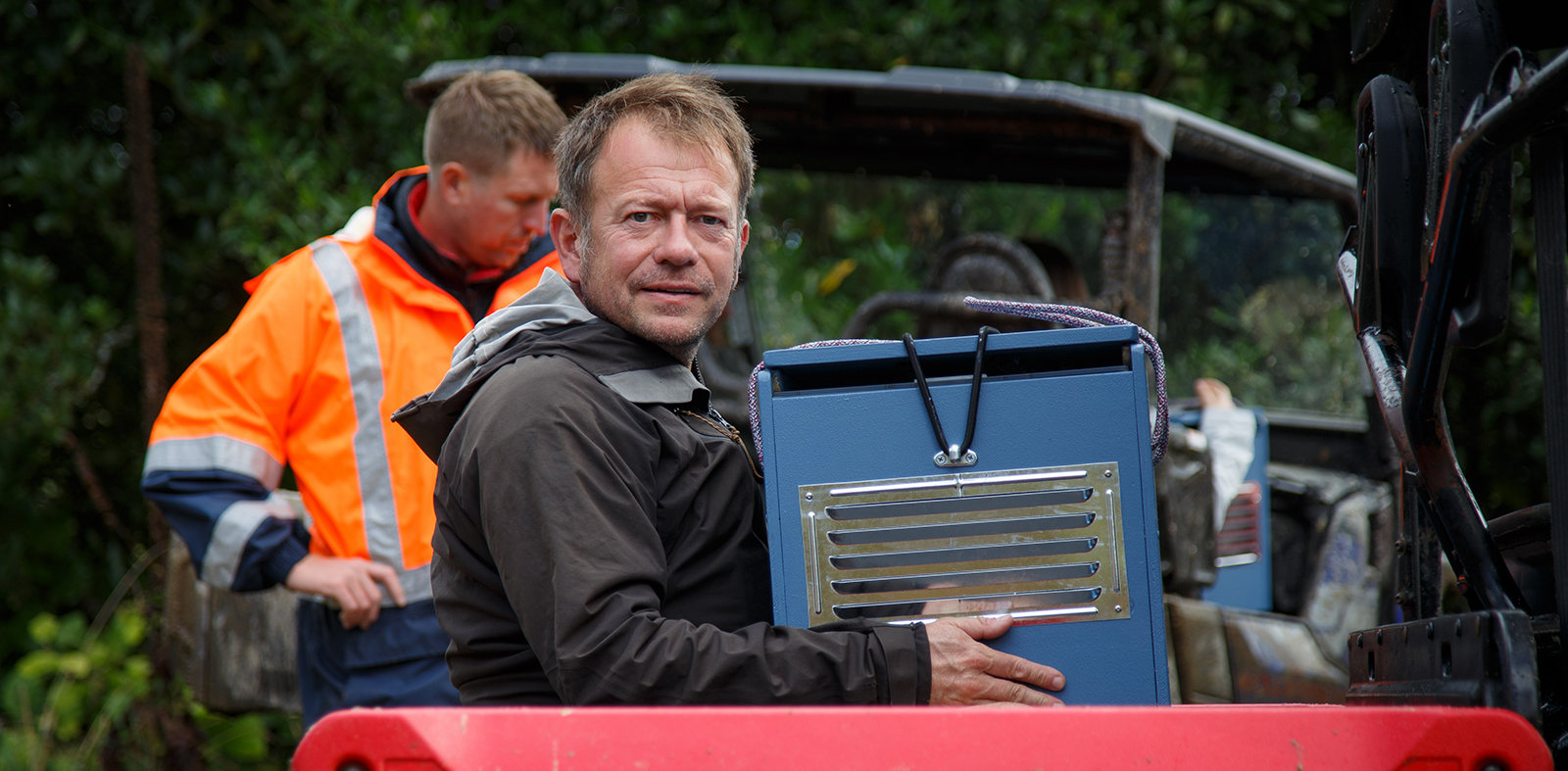
Children at Huiakama School in Taranaki were excited to release Chirp the kiwi into Rotokare Scenic Reserve after weeks of fundraising to help support their sponsored bird.
Connor, aged 11, is the lucky boy who held the kiwi. His job was to carefully put the bird into the makeshift burrow, which had been created by placing fern leaves over the entrance of a tree hollow.
“I loved it!” he says. “The kiwi is much stronger than I thought and it wriggled a lot when I tried to put it in the hole. I’ve never touched one before; its feet felt quite hard but its feathers were really soft.”
Nine-year-old Shakira adds, “It was really cool! You just feel so good seeing the kiwi go into the wild and I’m really proud that we’ve sponsored it.”
Leah, mum to one of the students, tells us, “It was awesome! I’ve never seen a young kiwi before. I especially loved seeing the reactions from the children, because they’ve been waiting for this day for what seems like ages.”
Chirp, Starship (named after the children’s hospital) and Vinnie are three very young kiwi that have travelled back to Taranaki all the way from Rotorua, where they were raised from eggs in a hatchery at Rainbow Springs Nature Park.
They still only weigh about a kilogram and need to grow to about 1.5 kilograms before they can be moved to Egmont National Park in a few months’ time, which will be their permanent home. This is when their growth rate is more stable and the transmitters on their legs, used to keep track of them, don’t need to be changed as often.
Because Rotokare is completely free of mammals like rats, hedgehogs, possums and stoats – which can attack and eat young birds as well as eggs – the reserve is a safe place for the baby kiwi to grow bigger while learning how to live and find food in the wild.
Kiwi experts Sue Hardwick-Smith and Michelle Bird, Chairperson and Manager of the Taranaki Kiwi Trust respectively, tell us that it’s mainly thanks to a survey of Egmont National Park that they have found more suitable areas for introducing new kiwis.
“We got help from students at Oakura School and Ngaere School to carry out the survey a few months ago,” Sue says. “They helped find out the range of the sound recorders in dense forest.”
For the survey, the Taranaki Kiwi Trust and the schoolchildren went out together to various places across the national park and set up recording units there. Every night for two weeks, the recorders would turn on automatically and capture all the sounds in the bush.
The team then played the recordings on a computer to look out for visual ‘sound pictures’ of kiwi calls, which the birds make to mark their territory and keep in contact with their mates and family.
“It’s easier to listen for kiwi than to try and find their burrows or spot them visually because kiwi are nocturnal and only come out at night, making it hard for us to see them.” Sue explains.
Out of 100 survey sites, only seven had kiwi calls recorded in them. Although the very low number is a cause for further investigation, Sue and Michelle tell us that they now know that these spots are the best release locations because they are all in predator-controlled areas.
“We know that these seven sites are the places where we’ll release the kiwis, because these birds need company and this will help anchor newly released birds,” says Sue.
“Hopefully with time their territory will get bigger and we’ll hear more calls in more sites the next time we do this survey.”
The survey was supported by funding from the Taranaki Participatory Science Platform (PSP), which is managed by Venture Taranaki







31 Richmond Street
Inglewood, 4330
Postal Address:
PO Box 308
Stratford 4352
Phone: 027 454 0591
E-mail: admin@taranakikiwi.org.nz
Receive regular news and updates. Get involved in upcoming events and support the Taranaki Kiwi Trust.
Stay up to date, follow us on our social media channels;
The Taranaki Kiwi Trust is registered with the Charities Commission, Number CC22851. Therefore, donations and subscriptions made to the Trust over $5 are eligible for a tax rebate.